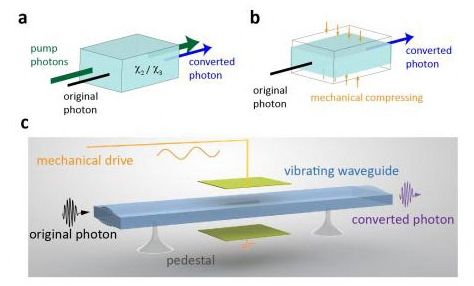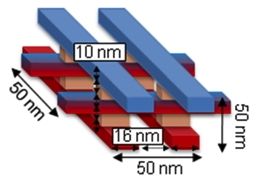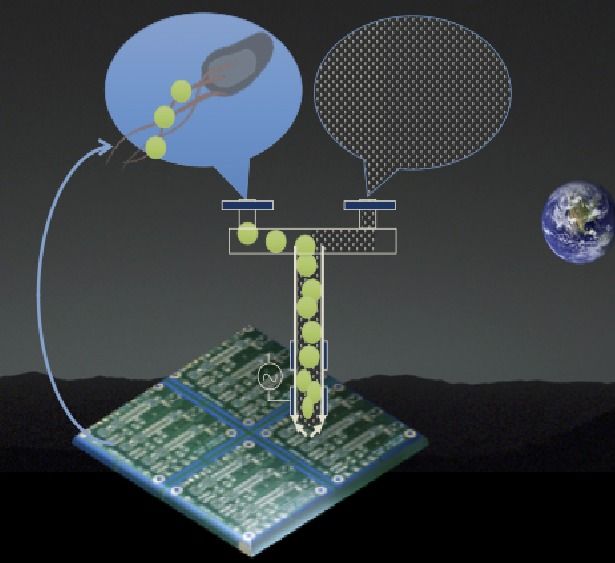Archive for the ‘engineering’ category: Page 198
Nov 9, 2016
World’s first light-seeking Synthetic Nano Robot Helps Remove Tumors
Posted by Karen Hurst in categories: biotech/medical, engineering, robotics/AI
Researchers have developed the world’s first light-seeking synthetic nanorobot that can help surgeons remove tumors and enable more precise engineering of targeted medications.
Don’t Miss: Sam’s Club Black Friday 2016 Deals
With size comparable to a blood cell, these tiny robots have the potential to be injected into a patient’s body, the study said.
Continue reading “World’s first light-seeking Synthetic Nano Robot Helps Remove Tumors” »
Nov 5, 2016
D-Wave Names Jeremy Hilton as Senior Vice President, Systems, Founder Geordie Rose Now Special Advisor
Posted by Karen Hurst in categories: computing, engineering, quantum physics
Congrats geordie rose and jeremy hilton ; d-wave ROCKS!
News posting on T-Net)
Burnaby, BC, November 4, 2016—(T-Net)—D-Wave Systems Inc., the world’s first quantum computing company, announced the promotion of Jeremy Hilton to senior vice president, systems, with responsibility for driving the company’s quantum processor and systems research and engineering functions.
Nov 3, 2016
Why “Computronium” is really “Unobtanium”
Posted by Andreas Matt in categories: computing, engineering, particle physics, robotics/AI, space
Computronium is defined by some as a substance which approaches the theoretical limit of computational power that we can achieve through engineering of the matter around us. It would mean that every atom of a piece of matter would be put to useful work doing computation. Such a system would reside at the ultimate limits of efficiency, and the smallest amount of energy possible would be wasted through the generation of heat. Computronium crops up in science fiction a lot, usually as something that advanced civilizations have created, occasionally causing conflicts due to intensive harvesting of matter from their galaxy to further their processing power. The idea is also also linked with advanced machine intelligence: A block of matter which does nothing other than compute could presumably would be incredibly sought after by any artificial intelligence looking to get the most compact and powerful brain for its money!
Nov 2, 2016
Yale Engineers Advance Quantum Technology With Photon Control
Posted by Karen Hurst in categories: computing, engineering, quantum physics
Engineers from Yale University have developed a new technique to control the frequency of single photons.
The ability to control the frequency of single photons is crucial to realize the potential of quantum communications and quantum computing. The current methods for changing photon frequency, however, bring with them significant drawbacks.
Researchers in the lab of Hong Tang, the Llewellyn West Jones, Jr. Professor of Electrical Engineering & Physics, have developed a technique that avoids these obstacles. The results of their work are published today in Nature Photonics. Linran Fan, a Ph.D. student in Tang’s lab, is the lead author.
Continue reading “Yale Engineers Advance Quantum Technology With Photon Control” »
Oct 31, 2016
A Tiny Machine: UCSB electrical and computer engineers design an infinitesimal computing device
Posted by Carse Peel in categories: computing, engineering, nanotechnology, particle physics
Abstract: In 1959 renowned physicist Richard Feynman, in his talk “Plenty of Room at the Bottom,” spoke of a future in which tiny machines could perform huge feats. Like many forward-looking concepts, his molecule and atom-sized world remained for years in the realm of science fiction.
And then, scientists and other creative thinkers began to realize Feynman’s nanotechnological visions.
In the spirit of Feynman’s insight, and in response to the challenges he issued as a way to inspire scientific and engineering creativity, electrical and computer engineers at UC Santa Barbara have developed a design for a functional nanoscale computing device. The concept involves a dense, three-dimensional circuit operating on an unconventional type of logic that could, theoretically, be packed into a block no bigger than 50 nanometers on any side.
Oct 29, 2016
Mars Medical Challenge Asks Students to Design 3D Printable Items to Keep Astronauts Healthy on Mars
Posted by Karen Hurst in categories: 3D printing, biotech/medical, education, engineering, space travel

The team of NASA, the American Society of Mechanical Engineering (ASME), and online educational platform Future Engineers has been a lot of fun to follow over the last year. Their collaborative 3D Printing in Space Challenges have resulted in some amazing, ingenious inventions from children as young as five years old, all aimed at improving the daily lives of astronauts now and in the future, on the International Space Station and, one day, on Mars.
Oct 27, 2016
The Future Is Now: The DeLorean Will Be Back And This Is How You Get One
Posted by Shane Hinshaw in categories: engineering, transportation
On October 19 in 1982, John DeLorean, the man behind one of the most sought after cars ever made, was arrested with 55 pounds of cocaine worth $24 million.
However, what could have been the end for his DMC-12 was only the beginning of a journey that literally stood the test of time and 1985 brought this car _Back to the Future_.
Ten years later, in 1995, the new DeLorean Motor Company (DMC) started to restore and repair the originals using the leftover parts. They also streamlined designs based on the original engineering drawings. But these days, DMC is finally trying to produce new, but very familiar DMC-12s.
Continue reading “The Future Is Now: The DeLorean Will Be Back And This Is How You Get One” »
Oct 25, 2016
Metal-Munching Microbes Could Manufacture Machines On Mars
Posted by Klaus Baldauf in categories: biological, engineering, space
Oct 24, 2016
Fighting cancer with the power of immunity
Posted by Steve Hill in categories: biotech/medical, engineering
Combination therapy to kick cancer to the curb!
Harnessing the body’s own immune system to destroy tumors is a tantalizing prospect that has yet to realize its full potential. However, a new advance from MIT may bring this strategy, known as cancer immunotherapy, closer to becoming reality.
In the new study, the researchers used a combination of four different therapies to activate both of the immune system’s two branches, producing a coordinated attack that led to the complete disappearance of large, aggressive tumors in mice.
Continue reading “Fighting cancer with the power of immunity” »

















